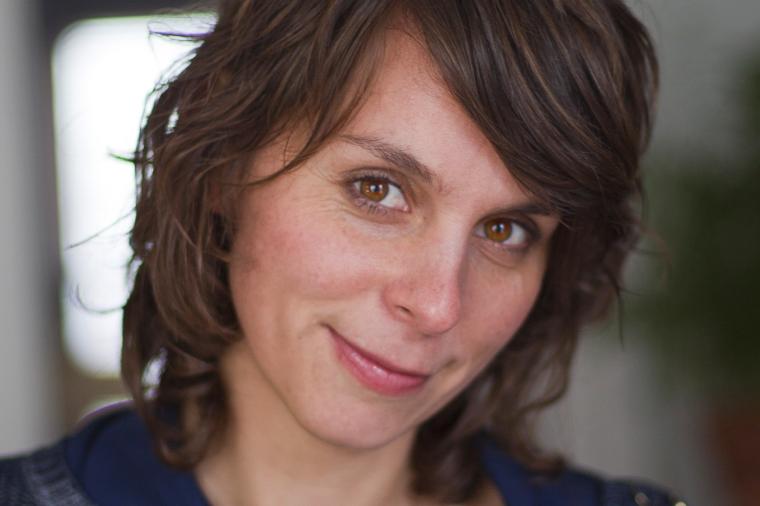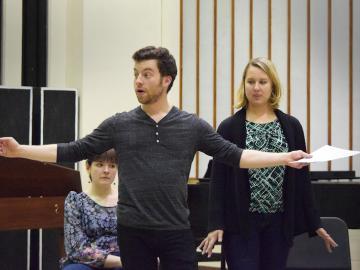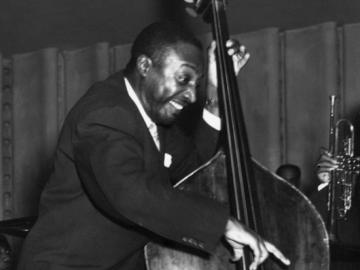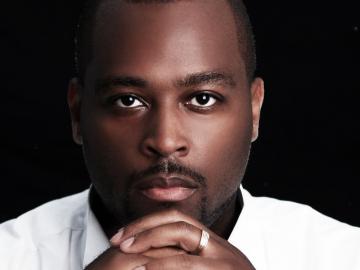Music You Can Feel
April 20, 2015
Daniel Hautzinger

This profile is one in a series focusing on the careers of conservatory students after Oberlin. For more "After Oberlin" stories, visit the News Center.
“Things made of sound usually can’t be touched,” says Ashley Fure ’04. “But I’m greedy as an artist. I want to provoke more senses than just hearing.”
Fure creates visceral, almost tactile music for the concert hall and for multimedia installations, collaborating not only with top new music groups such as Ensemble Dal Niente and the Arditti Quartet, but also with visual artists, choreographers, and architects.
In 2014, Fure was awarded the Kranichstein Music Prize—one of the most significant awards for young composers—for her septet Something to Hunt, a masterful and frightening rendering of a predator’s insatiable drive for prey.
“Incorporating sight, touch, and space into my sonic practice has brought me into close contact with artists from other disciplines,” she says. “I find those acts of translation and collaboration inevitably challenging and inevitably fruitful.”
Also in 2014, while on a Fulbright Fellowship in France, Fure explored the translation of music into movement and vice versa in a collaboration with choreographer Yuval Pick. Their hour-long electroacoustic ballet Ply was commissioned by the renowned Parisian school IRCAM, where Fure studied for two years.
While in her second year there in 2011, she created Tripwire, her first multimedia collaboration, with visual artist Jean-Michel Albert. She describes the project as “massive kinetic sculpture made of spinning strings, moving light, and spatialized sound. It explores the phenomenon of vibration through multiple media, weaving moving sound, light, and rippling elastic into vibrant, synesthetic gestures.”
Such “synesthetic gestures” are also an integral part of Fure’s 2012 piece Veer, in which participants move through an architectural installation designed by her brother, Adam Fure, setting off speakers and LEDs with their motion.
Fure is now collaborating with Adam again, along with London-based director Patrick Eakin Young, on an upcoming “electroacoustic object opera.” Commissioned by the International Contemporary Ensemble, it will premiere at Darmstadt in 2016.
“We want to make a music drama that explores the hidden lives of objects devoid of human gaze,” Fure says. “In place of human characters, a cast of custom-built objects will transform throughout the piece via sound, lighting, and kinetic effects, presenting themselves as characters with their own stories to tell.
Fure’s forays into sonic “acts of translation” qualify her for her recent appointment as assistant professor of sonic arts at Dartmouth College. She will take up that position in the fall, after finishing a postdoctoral fellowship at Columbia. (She completed a PhD in composition under Chaya Czernowin at Harvard University in 2013.)
“In addition to its Master’s Program in Digital Music, Dartmouth has just created a pathway for undergraduate music majors focused on music since electricity,” she explains. “I was hired to help shepherd in this new sonic arts curriculum.”
Fure’s first teaching experience came at Oberlin, where she spent the spring of 2012 as a visiting professor of composition.
“It was very invigorating and intellectually satisfying,” she recalls. “It was the first time I had really designed my own syllabus, as I was asked to teach a seminar and was essentially given free rein. The students are top-notch, they’re bright, they’re inquisitive.”
Those exceptional students are one of the aspects of Oberlin that she most enjoyed in her undergraduate years. “We always joked about the 'new music mafia'—that clan of virtuosic players all running around performing the most challenging contemporary music. Getting to be a part of that culture and getting to experiment with these amazing players who were also friends was a deeply formative experience.”
She also emphasizes the integral role played by her teachers. “I had a very close and productive relationship with [Professor of Composition] Lewis Nielson, who was my private teacher for most of my time at Oberlin. His confidence in me, his insight, and his broad knowledge of the field in both America and Europe really opened my eyes and ears to all sorts of possibilities.
“Composition at Oberlin is unusual in its appetite for the experimental and avant-garde. My ears were really unbounded there.”
Tags:
You may also like…
Jason Goldberg '16 Leads Oberlin Co-Production of Dido and Aeneas
April 5, 2016
Milt Hinton Institute Returns with Emphasis on Suzuki Instruction
March 31, 2016
Baritone Michael Preacely '01 to Perform, Lead Talks at Oberlin
March 17, 2016


